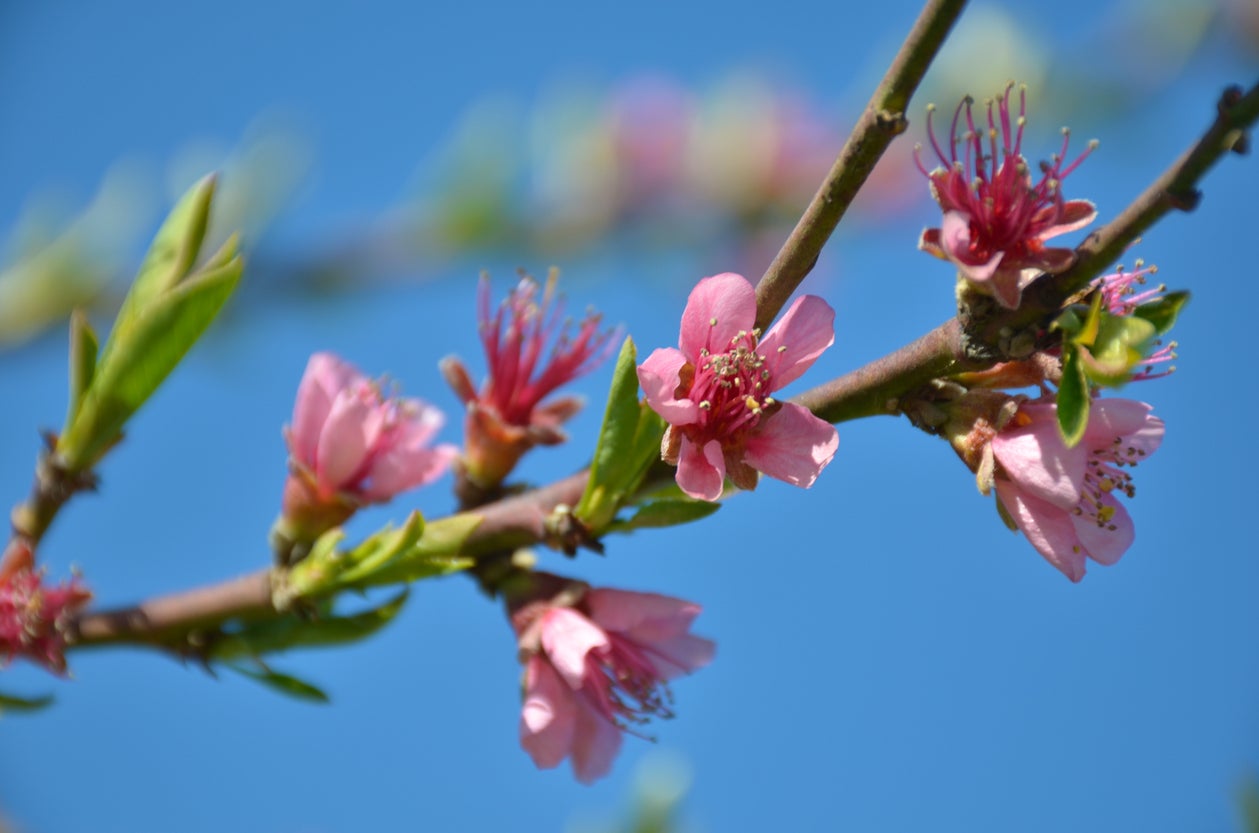Frost Peach Information – How To Grow A Frost Peach Tree


If you are looking for a cold hardy peach tree, try growing Frost peaches. What is a Frost peach? This variety is a partial freestone with classic peachy good looks and flavor. These peaches are yummy canned, in desserts, or fresh out of hand. Continue reading for some helpful Frost peach information that can help you decide if this is the cultivar for you.
What is a Frost Hardy Peach?
Close your eyes and conjure up the scent of a fully ripe summer peach. There are few things like the abundant fruits of summer, and peaches are one of the best. A Frost peach produces medium to large fruits on a self-fruitful tree. Fruits are so abundant that tip pruning may have to occur to allow fruit space to develop. Frost peach grows in USDA zones 5 to 9, making it one of the hardiest peaches available. It does bloom early, however, which may make fruit set difficult in areas with late freezes. Beautiful hot pink flowers occur in spring before the tree develops leaves. These cold hardy peaches grow 12 to 18 feet (4-6 m.) in height but semi-dwarf forms are available that only get 10 to 12 feet (3-4 m.). Pruning can help keep your Frost peach tree the height you require. The fruits are slightly blushed over greenish yellow to yellow skin and have yellow-orange flesh and a semi-clinging stone.
Frost Peach Information
The Frost peach tree requires 700 chill hours to break dormancy and set fruit. It is resistant to peach leaf curl and root knot nematodes. It is, however, susceptible to oriental fruit moths, brown rot, and peach twig borer. They are extremely adaptable plants that will start bearing three to five years after planting. By the time the tree is mature at 8 to 12 years, it will produce its peak crops. Blooming occurs in mid-March to April and fruits are generally ready in mid to late August. Peaches don't store for long, so staggered plantings of varieties that ripen at different times are suggested. These cold hardy peaches are great canned, and so a bumper crop won't go to waste.
Growing Frost Peaches
Peaches prefer a site with full sun and well-draining soil. They can thrive in almost any soil type as long as it doesn't get boggy. Fertilize once per year in early spring. Use organic mulch around the root zone to preserve moisture and prevent weeds. Peach trees need regular pruning to promote air flow and enhance cropping. You can remove old, dead, or diseased wood at any time of the year, but maintenance pruning is done in spring just at bud swell. Remove the old, gray shoots that will not fruit and leave the reddish young growth. Peaches fruit on one year growth and can be pruned hard annually. If necessary, once fruit begins to form, nip off a few in each developing group to promote bigger peaches.
Gardening tips, videos, info and more delivered right to your inbox!
Sign up for the Gardening Know How newsletter today and receive a free copy of our e-book "How to Grow Delicious Tomatoes".

Bonnie Grant is a professional landscaper with a Certification in Urban Gardening. She has been gardening and writing for 15 years. A former professional chef, she has a passion for edible landscaping.
-
 Looking For Plants To Give You The Soft And Fuzzies? Try These 5 Fuzzy Leaf Plant Options
Looking For Plants To Give You The Soft And Fuzzies? Try These 5 Fuzzy Leaf Plant OptionsLovers of texture, drama, silver foliage and tactile plants will adore these special sensory garden additions. These fuzzy leaf plant options will leave you all aglow
By Susan Albert
-
 Get Ready For A Summer Of Hummers! Grow These Full Sun Hummingbird Plants and Flowers
Get Ready For A Summer Of Hummers! Grow These Full Sun Hummingbird Plants and FlowersIf you’re lucky enough to enjoy a sunny backyard, make sure you are maxing out on your pollinator opportunities and grow these full sun hummingbird plants and flowers
By Tonya Barnett